- Warrior Nun Struggles As a Trauma Narrative (Part 1)
- Warrior Nun Struggles As a Trauma Narrative (Part 2)
- Warrior Nun Struggles As a Trauma Narrative (Part 3)
- Warrior Nun Struggles As a Trauma Narrative (Part 4)
- Warrior Nun Struggles As a Trauma Narrative (Part 5)
Content warning: discussions of child abuse
Spoiler Warning for Warrior Nun
Introduction:
Hello once again, fellow Warrior Nun fans! Welcome to the final ride of my series!
Over the past few months, I have explored how Warrior Nun stumbled in its handling of Ava’s traumas, and overall, the narrative did not address that the Sisters treated Ava like absolute sh*t and never gave Ava the chance to speak up about it. (Here are parts one, two, three, and four for reference.) The show also never gave her the chance to contextualize her background within the Catholic Church and to speak about her abuse. And I understand that the writers had only so much time in their ten-episode first season, and as I mentioned in my second piece, the pacing overall worked in Ava’s favor for telling an honest story about life after trauma. That being said, the writers created a few character issues that should be addressed in season two and these issues, rooted in the world’s ‘non-survivor privilege’, affect the authenticity of character relationships.
Today I will be discussing our beloved badass, Shotgun Mary, and her relationship with Ava. Ultimately, Mary connects with Ava because of them both being outsiders, in varying degrees, within the traditional structures of the OCS. Mary understands Ava in a way that the other Sisters don’t, and the writers designed the story to accommodate their specific relationship both in terms of backstory and pacing.
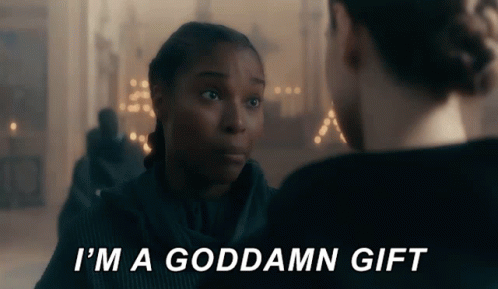
Mary and Shannon:
This past month Kori hosted a second, special Warrior Nun episode on Ladies First, and she and the guest hosts from @Warrior NunPromo discussed how Mary sees Ava as a human and not just as the Halo-Bearer because of her relationship with Sister Shannon. Sister Shannon was the Halo-Bearer before Ava, and her death led to Ava’s resurrection as the next Warrior Nun. Kori’s comment helped this article click for me as Mary’s love for Shannon — whether platonic or romantic — fueled her throughout the first season and how she approached Ava. The narrative makes more sense if Mary and Shannon were romantically involved, which I discuss in a bit. Overall, when considering her character’s comic origins and the not-subtle subtext regarding her “friendship” with Sister Shannon, Mary is queer. And her narrative as a woman avenging her girlfriend while also guiding a young woman subverts the male action hero’s story through sapphism and feminism.

Regarding Shotgun Mary’s comic origins, showrunner Simon Barry developed the show from a ’90s comic series, Warrior Nun Areala, by Ben Dunne. The writers did not do a one-to-one adaptation of Warrior Nun Areala, instead using varying elements of the source material for inspiration and as a foundation. Shotgun Mary is a main character in the series and also got her own spin-off titled Shotgun Mary: Blood Lore, and though she changed a lot in the transition from page to screen, she retains some key traits, such as her gun-based fighting style and motorcycle skills. Toya Turner, who plays Mary, even focused on training in these skills so as to better translate the character onto screen.
Shotgun Mary is queer in the comics, and I’ve seen publications and Turner herself refer to Mary as a lesbian. Notably, a special edition action figure references her queerness in the production description: “Mary is revealed to be a lesbian (or at least bisexual) in the “Shotgun Mary: Blood Lore” series. Ten years prior to the events in that story, she had been in love with one of her fellow Warrior Nuns.” It’s not unreasonable to assume that Barry and his team would also adapt this specific trait, especially since Warrior Nun the show has demonstrated that it will platform explicitly queer characters i.e. Sister Beatrice (and Ava too, if we’re being honest about the very loud foreshadowing).
In rewatching the first episode, it is startling how obviously Mary and Shannon are framed as life partners losing each other too soon. Mary is the one who holds a dying Shannon in her arms, and she is the Sister most protective of Shannon and the Sister most resistant to removing the Halo. They share the longest goodbye, Shannon warning Mary specifically to not trust anyone. She also gives Mary her necklace, which Mary goes on to wear in subsequent episodes. When ignoring heteronormativity, their interactions read as the classic final moments between a couple in a movie before the love interest dies, motivating the hardened action hero to take up arms. Relatedly, in an interview, Turner references the film Gladiator when describing Mary’s character. That story follows a warrior figure avenging his murdered wife and son. In the same interview she also describes the first episode for Mary in dark terms, stressing how devastating Shannon’s loss is for the character: “We [the audience] come in on her worst day, so just kind of following her arc, it was really heavy on me.”
The show people reinforce the tragic romantic elements later in the episode when Mary privately grieves at the Cat’s Cradle. In a flashback, Mary and Shannon talk about their love for each other, and though the dialogue is ambiguous, Shannon frames her love for Mary as separate from her love from the other OCS members: “You know I love you, right? And I love all the girls here.” This interaction right here echoes an observation Turner made:
““They kept saying in the script ‘she’s my friend, she’s my friend, she’s my friend’, but everybody else she calls sister; Sister Beatrice she calls sister, Lilith she calls sister,” she observed. “So I was like, ‘these two are lovers. They are lovers. She has drawings of this woman in her room’, you know what I mean?””
Her observation reminds me of the concept of ‘romantic friendships’, a centuries-old label for emotionally intimate female friendships. The term has a complicated history in sapphic culture because of its ambiguity and because throughout the latter half of the twentieth-century scholars applied it to close female friendships in order to sidestep discussions of lesbian sexual activity. Emma Donoghue, in her book Passions Between Women, disputes those scholars, noting, “Often [romantic friendships] were lifelong emotional partnerships, more like marriages than friendships,” (p. 122). Whether they realize it or not, the writers’ choices for dialogue echo the language that has surrounded certain types of queer women for centuries. “Gal pals” is the modern equivalent for “romantic friendship” in popular culture, and Warrior Nun seemingly does the same to distinguish the emotional closeness between religious friends and religious lovers.
Additionally, this flashback occurs in the midst of a scene in which Mary watches her Sisters grieve. Sister Camila plays the piano and sings the Frank Ocean song ‘Pink + White’. Though the song isn’t about explicit romantic love, Ocean is an out queer man, and the showrunners choosing to have a queer man’s music close out the scene where Mary reminiscences about her gal pal is… something to say the least. Especially since it’s covered by Camila. She presumably chose the song in-universe, and later in the season she is the one who finds the story about the lesbian Warrior Nun Melanie and recommends Beatrice to read it with Ava. Camila is an enthusiastic ally with great gaydar.
Finally, the writers’ portrayal of Mary’s grief echoes doomed heterosexual romances in media. For example, in 1×04 Mary investigates Shannon’s room for clues and eventually becomes overwhelmed with grief, curling up on Shannon’s bed. If Mary or Shannon were a man, no one would be questioning the fact that this was a romantic relationship. Curling up tearfully surrounded by a loved one’s belongings is textbook spousal grief in storytelling.
Off the top of my head, in Taylor Swift’s break-up song ‘Last Kiss’ she sings about sitting on the floor, wearing her ex-lover’s clothes, and in the music video for LeAnn Rime’s song ‘Probably Wouldn’t Be This Way’, her character lingers in her closet, smelling her dead husband’s shirt before wearing it. And in a season four episode of The Walking Dead, the character Glenn lies across his marriage bed in despair and exhaustion, staring at a picture of his wife who he had been separated from as they escaped a warzone. The universality of grief means storytellers do not have to be explicit and have couples loudly declaring their mutual love all the time before a passionate make-out. Quiet moments of friendship and the subsequent quiet moments of loneliness after loss can communicate just as loudly.
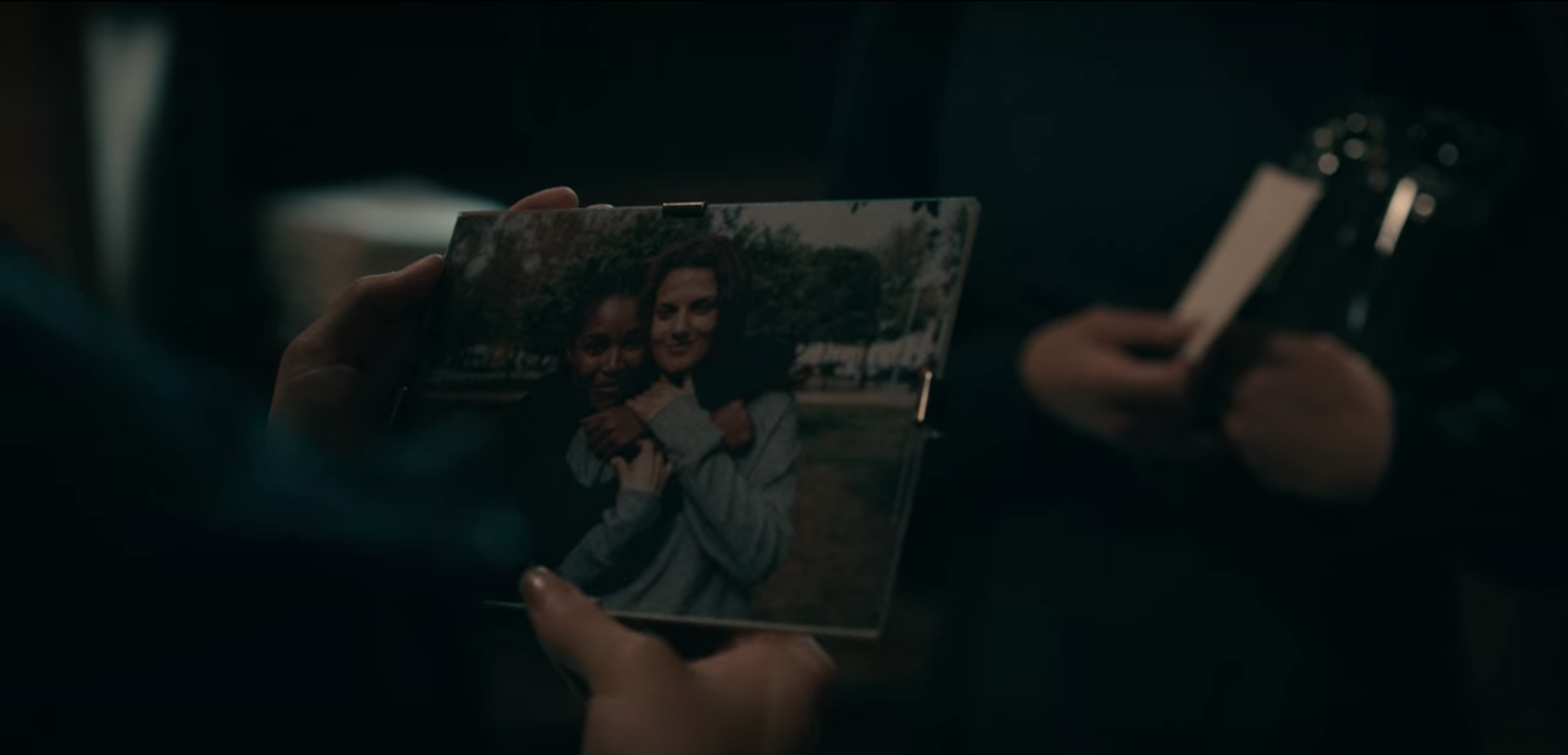
Mary As a Witness:
Mary’s queerness affects the overarching story as her relationship with Shannon impacts her later camaraderie with Ava, begrudging eyerolls and all.
Throughout 1×06, the episode in which Ava and Mary bond in isolation from the OCS, Mary repeatedly talks about the importance of having a ‘purpose’. She and Beatrice are similar in that regard, they just inversely process emotions. While Beatrice starts the season dissociating through her duties, Mary takes the directive and uses it like an emotional compass, the gasoline to her fire. In the film Memento, a character describes the protagonist’s obsessive mission in idealized terms, and it reminds me of Mary’s story within the greater thrust of narrative conventions: “A dead wife to pine for, a sense of purpose to your life… a romantic quest[.]”
That quote references the archetypal hero driven by love and vengeance, and in relation to Shotgun Mary, it frames her character arc this past season. Mary already had purpose before Shannon’s death as the OCS provided her with its demon fighting, as well as structure and family. Now she has been redirected in supporting the new Halo-Bearer and avenging Shannon.
As Kori mentioned on Ladies First, because of Mary’s closeness with Shannon, she recognized the vulnerabilities of a Warrior Nun more so than the others at the Order. Each Warrior Nun must seem invulnerable, to a degree, to the other nuns because of her ability to heal and because divinium is so rare, regardless of her typically short lifespan. It would be inaccurate to say that the Warrior Nun is godlike to her peers, but she is definitely expected to be an unshakeable pillar of strength. Romantic partners like Mary would see beyond that.
In cinema, villains like Immortan Joe can fail to indoctrinate their wives into believing their godlike status, as their partners see them for the vulnerable human being that they are. Similarly, abusers like the Joker manipulate and seduce their partners like Harley Quinn through displays of vulnerability that come with a romantic relationship. Mary and Shannon’s relationship is the moral flipside of that, reminiscent of the supportive partnerships between political rulers and their wives throughout history. Even superheroes need a pep talk before the showdown.
In a romantic context between Mary and Shannon, Mary helping Ava come into her own and to accept the Halo fits into the classic story of the grieving partner to the fallen hero who helps the protagonist to take up the partner’s legacy. By honoring the Warrior Nun tradition, Mary can hold on to another part of Shannon. Mary as Shannon’s grieving lover also fits into the archetypal lone wolf on a quest to avenge their fallen partner. So while we never see Mary be explicitly queer during this first season, her story falls into several romantic tropes colored by rainbows, and this queer coding affects her relationship with Ava, recontextualizing her understanding of the newest Warrior Nun through her understanding of Shannon.
Turner once said, “[Mary’s] vulnerable, she’s tough and, to me, she’s a leader too, but she doesn’t want to be. I don’t think she would accept the halo if she had to. There’s something very graceful and tough as shit about her.” Mary recognizes the true weight of the Halo, and thus, she eventually comes around to recognizing that Ava cannot accept this glorious burden on the instruction of an authority figure. She leads because purpose drives her, and the second half of 1×06 follows Mary encouraging Ava to experience this sense of accomplishment and meaning driven by her agency, rather than by expectations of the Church. Understandably though, it takes Mary some time to reach Ava, as their time in 1×06 comes after they watched Sister Lilith be presumably killed and dragged to Hell by a Tarask demon. And the writers again use the slower pacing of the first half of the season in order to accommodate their complicated relationship.
It Takes a Village (and Shotgun Mary):
Episode 1×06, ‘Isaiah 30:20-21’, functions as a turning point for Warrior Nun when considering film narrative structure and archetypal storytelling plot elements. As Kori and Alejandra pointed out on Ladies First, this shift occurs because Ava connects with an actual community for the first time since she was orphaned.
If you’re an English nerd like me, you probably have heard about the Hero’s Journey at some point in your life. The “Hero’s Journey” refers to a series of archetypal story structures and stock characters that recur regardless of time or place, and due to patriarchy, the stories and subsequent discussions have centered around men and a masculine understanding of growing up. Joseph Campbell popularized the concept in the late 40s. In 1990, Maureen Murdock refuted Campbell’s universalization of the male story, Murdock outlining a “Heroine’s Journey”. Subsequently, author Lois McMaster Bujold summarizes the Hero’s Journey as patrilineal while the Heroine’s Journey as cyclical: “[T]he male goes out into the world and returns to his starting point to take over the role of his father, the successful female (in exogamous cultures, which most are) goes out and keeps on going, never to return.”
Warrior Nun appears to be blending the Hero and Heroine’s Journey when considering how it uses setting and movement for character development. The story hinges on Ava returning to the OCS so she can succeed Shannon Masters as the next Warrior Nun, but Ava’s journey began when she left her childhood home of St. Michael’s Orphanage behind after coming back to life. She will never return to her starting point like a Campbellian Hero — towards the end of the first season she even aspires to be the last Warrior Nun, eliminating this bloody female line altogether. On top of all that character [stuff], we do not know what will happen to the OCS and how stable of an organization it will be going forward. Being in constant motion seems to be the likeliest course of Ava’s story for the series. And with all of that in mind, 1×06 is almost a microcosm of the Hero’s Journey in terms of setting and psychology.
‘Isaiah 30:20-21’ picks up after a tense encounter between Ava and Mary, and this tension shapes the first half of their time together in this episode. The ambitious Sister Lilith had attempted to murder Ava in order to retrieve the Halo the last time we saw the characters, and she then seemingly sacrificed herself to save Ava from a demon, being dragged into the Hell in the process. Such a whiplash would further alienate anyone from the OCS, and I would argue that Ava has enough reason to doubt Lilith’s sacrifice being one hundred percent altruistic. It could be argued that Lilith had attempted to shield Ava from the Tarask so as to keep the Halo out of Hell’s clutches. Mary was there through all of this and noticeably injured, forced to limp after a horrified Ava. Thus, when we meet them in 1×06, Ava is further distrustful of any OCS member and Mary grieving another loved one who died before her eyes. They need some down time to argue out their feelings, to say the least. That is where story setting and structure come in.
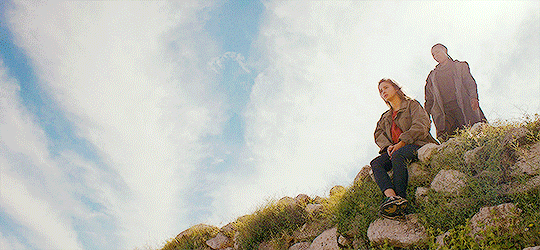
In classical literature, Biblical epiphanies happen in the desert, which showrunner Simon Barry and his team swap out for the mountainous Spanish countryside. The general isolation of the setting bolsters the intimacy of Ava’s storyline this episode as she and Mary traverse rocky slopes and their mutual frustration towards the other, unable to be distracted by the Church, demons, or potential boyfriends. The site No Film School defines a bottle episode as “an episode of television that is produced for a limited amount of money and with limited sets, characters, and locations. […] Bottle episodes are driven by dialogue and usually have people trying to deal with situations in real-time.” While 1×06 is not a pure bottle episode due to its multiple plotlines and sets, it captures the narrative spirit as this episode slows down the story for the characters and creates breathing space for necessary conversations.
Mary tries to spur Ava into caring about the OCS and the Warrior Nun’s mission in two distinct ways, and she fails at both because she falls into manipulation techniques often used by the Church, blinded by pain and grief. Influenced by her Catholic upbringing and position within the Church, Mary’s different attempts at ‘persuasion’ rely on guilt. She first attempts reverse psychology on Ava, declaring that she’s tired and done caring about Ava, tired of caring in general and blaming Ava for Lilith’s death. Her vocal indifference and damaged leg only encourage Ava to follow after Mary, a grumbling empathetic puppy. Ava recognizes Mary’s attempts at reverse psychology all the same. That being said, I also believe that Mary’s wish to stop caring comes from a sincere place of being exhausted with the cost of empathy. Beneath her badassery and swagger there is a tenderness that weighs heavily on her, because of her numerous losses in life. Toya Turner has even described Mary as a “big softie”.
Being a “big softie” though means that Mary is even more wounded than she appears, and so her next persuasion attempt is more venomous. She and Ava shelter for the night in a cave, and as a fire crackles, she reveals her backstory to Ava, how she came to the OCS. (I will discuss that later.) She badgers Ava for her supposed self-centeredness and mocks her for wanting to be ‘normal’. At one point, Mary asks Ava in an accusatory tone,“And you think you’re the only one with scars? Well, you’re not. All the sisters have a story. And if you cared enough to ask, you’d know.”
Well Mary, Ava did try to get to know Beatrice, who only shut her down and called her selfish, while the rest of the sisters either shunned her or tortured her. Ava has been the only character who has consistently recognized that others have scars, while no one else has taken Ava’s trauma into account. While we don’t know if Ava told Mary about her murder, Mary knows that Ava was confined to a bed due to her paralysis and later died suddenly. Ava clearly has her own scars. And community goes both ways — it not only comprises an individual supporting the community but also the community supporting the individual.
Later, Ava quips, “I cannot believe I actually thought you were a nun.”
That’s because Mary was guilt-tripping Ava like a nun would. Mary and the rest of the OCS telling Ava that she should be grateful for the Halo resurrecting her and thus she should help them in their mission reminds me of the toxic parent who manipulates their child and guilts them into doing something because the parent created the child. It’s gross and unhealthy and such a mindset unsurprisingly leads to Ava and Mary physically struggling, Ava planting Mary onto the floor. Their relationship eases after this, though. They snark at each other the next day, but the tension, for the most part, has evaporated.

Mary eventually guides Ava to a small town in order to secure supplies and transportation and, implicitly, to show Ava the good work that the OCS does. The village is so old parts of it look as if it were carved out of the mountain, and the villagers adore Mary, seeing her as an extended family member, the OCS having rid the village of a plague of demons the year before. Interacting with the townsfolk moves Ava, especially after she talks to victims of demonic possession and fights off a demon, exorcising a civilian in the process. Ava exercises her agency in order to restore agency to others, and that active empathy resonates with her, later manifesting as a concrete plan to end the Warrior Nun line so as to stop the deaths of young women. Having grown up paralyzed in an abusive institution, Ava slowly commits herself to ensuring others’ right to self-determination and right to life at all costs. Mary comes to recognize this, likely bolstered by her seeing Shannon burdened by responsibility for so many lives and by Ava’s vocal distrust in the OCS, her having at one point asked Mary why she works for them when they only “use” her. Notably, Mary does not reveal Ava’s location to the OCS, allowing her to choose for herself what she wants to do. And the narrative reflects that, as Ava doesn’t return to the Cat’s Cradle right away, stopping by the plot-relevant laboratory for most of 1×07.
In addition, Ava’s bond with the villagers reflect her first healthy, mutually supportive connection to a community since her mother’s death. For the past twelve years, she had few friends and suffered at the hands of neglectful nuns, one of whom was an abusive serial killer. Ava distrusts social groups with any communal structure and power because of this. When discussing fandom culture, actor David Duchovny once discussed its similarities to religion, and his comment resonates with Ava’s situation:
“[Fandom] takes the place of some of the functions of a church in a small town: A place where people come together, ostensibly to worship something. But really what’s happening is you’re forming a community. It’s less about what you’re worshiping and more about, “We have these interests in common.” Someone has a sick aunt and suddenly it’s about that, raising money to help her or sharing resources to make her life easier. That’s what it was about with The X-Files on the Internet.”
When Ava stayed at the Cat’s Cradle, no one tried to find common ground with her. At this unnamed Spanish village and with Mary, Ava finds people to relate to who have experienced dehumanization reminiscent of hers. And people who encourage her to grow as an independent adult.
To circle back to the cave, Mary’s backstory helped her reach Ava in a way that the other Sisters couldn’t have, even if they had the isolation and time that Mary did thanks to the isolation. She and Ava have a mutual understanding due to their childhoods as orphans raised in institutions. Mary was eight years old when she lost her mother (to a life sentence rather than a car accident), only a year older than Ava. Her mother had murdered her abusive husband, and a racist system — that included a racist prosecutor and judge — punished her for being a Black woman that valued her life, having killed Mary’s father in self-defense. And while Mary’s mother is still alive, Mary even likens this loss to a maternal death: “[W]hen she pulled that trigger, she ended both their lives.” She proceeded to grow up in the foster system before landing at a Catholic boarding school where Father Vincent found her. His mentorship and support led her to the OCS and to a privileged position as a warrior free from rigid vows, someone who can come and go.
Indeed, in the cave we see Mary fall into similar tactics as the prosecutor who ripped apart her testimony by painting her as a liar. Mary paints Ava as selfish and emotionally immature, being accustomed to having everything “revolve around her” because of her paralysis meaning that she required constant care. With the prosecutor, his machinations relied on racism and misogyny. Mary’s accusations read as ableist and as non-survivor privilege in the context of institutionalized childhood abuse. Mary survived racist, misogynistic abuse in her childhood, as well as her father’s violence, but as far as we know, she did not suffer the day-to-day abuse from a caregiver after him. She even benefited from institutional power as the government funded her tuition to the boarding school that eventually led her to Father Vincent and the OCS.
I do not think it was a coincidence on the writers’ part regarding Ava and Mary’s ages. Turner even mentioned that she wanted flashbacks of Mary’s childhood next season because, “I would like them to, for me and for all Black girls, I want them to show how little Mary was.” These female characters were at a similar age when their lives were shattered, and so while Mary may be frustrated with Ava for the first half of this episode, a part of her recognizes where Ava’s snark and stubborn independence come from. Lying on the ground that night, trying to sleep, she probably thought about her childhood and Shannon and how Ava fit into everything. Back in episode 1×03, Ava had tried to connect with Beatrice, who clammed up at the slightest risk of revealing a wound. While the cave scene is hard to watch, because it reeks of non-survivor privilege, it also is necessary because Mary’s vulnerability differs from the other Sisters’ guardedness at the Cat’s Cradle. Mary succeeds where Beatrice fails because she gives up more of herself and that initial upfront-ness encourages Ava to be vulnerable in turn. Overall, Mary’s success is rooted in respecting Ava’s agency and replicating her mentor relationship from Father Vincent with Ava, introducing her to a supportive community. Beatrice tried to be like Shannon and that failed as Shannon’s methods hinged on the mentee’s consent to be at the OCS.
And Mary also understands Ava in a way the others don’t because she has not tied herself to the Church in the same way, and her position is more likely to appeal to a non-religious, free-spirited type like Ava .If Beatrice represents an extreme attachment to institutional structure, then Mary represents the middle ground, the liminal figure who comes and goes and comes back again. That freedom of movement, representing an OCS willing to accommodate a Sister’s individual needs, resonates with Ava.
And I look forward to seeing how Mary and Ava bond going forward, now that they have a shared goal in stopping Adriel and kicking Father Vincent’s ass. The writers also need to make sure these ladies get a dogpile hug from the other Sisters! They’ve been through enough.
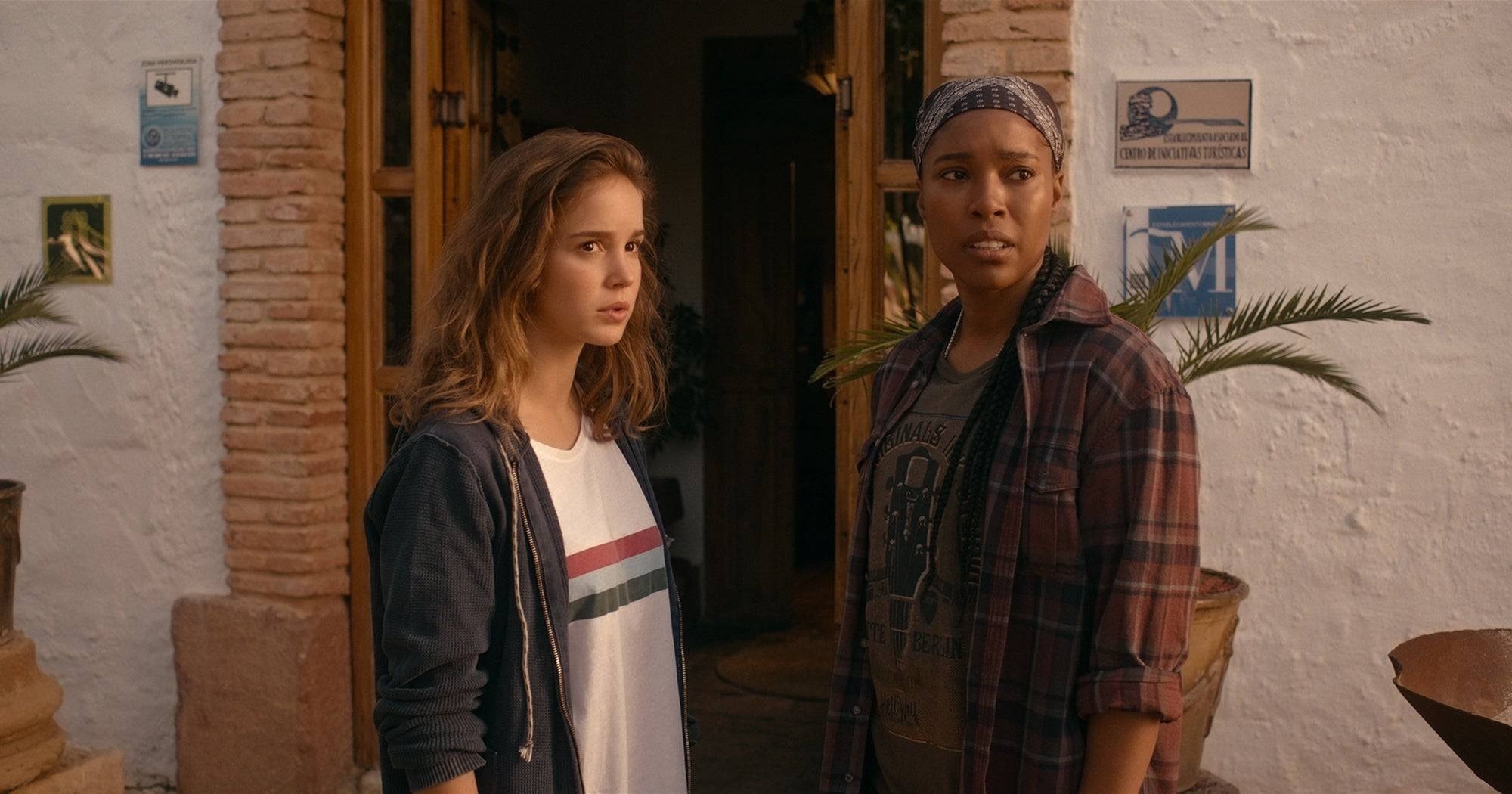
Conclusion:
And so, after this exhaustive trek into non-survivor privilege, trauma, and Warrior Nun, you all must be wondering what can be done for the show to do better going forward. Basically, the Sisters need to be called the f*ck out and apologize to Ava. Non-survivor privilege, as a cultural extension of social trauma, relies on silence and unacknowledgement. The writers can correct this issue in their show by giving Ava the chance to vocalize her past issues with the OCS and where those issues originated. And that doesn’t mean she just cries in Beatrice’s arms after revealing that Sister Francis murdered her. (Though I would love to see such an angsty, tender scene.) The writers need to give Ava the chance to talk about the OCS’s specific misconduct towards her.
Even if Ava hadn’t been abused and murdered by the Church, in my opinion she still wouldn’t be selfish for running and not wanting to get involved with the OCS. The Sisters drugged her, changed her clothes, and strapped her to a bed, for all intents and purposes kidnapping her. Then they expected her to fight their centuries-long war without question. The Sisters need to review the definition of ‘selfishness’ versus ‘self-preservation’, especially considering that Ava was a civilian refusing to get involved with something she never asked to be a part of, not prioritizing strangers who have harmed her in one way or another. We see some of that recognized by Shotgun Mary, implicitly at least, as she gives Ava the ability to choose whether or not to join the Order.
And the thing is, the show has so much potential to address these issues in season two and use the strong interpersonal relationships to grapple with difficult subject matter. I understand why they didn’t bring most of the nitty gritty stuff up in the show’s first season because there was so much to introduce. That being said, the writers have proven themselves capable of delving into Ava’s abuse at the hands of the Church as the show has made several implicit and explicit references to the Church’s historic mistreatment of women.
Overall, Warrior Nun relays a conflicting first season about Ava’s trauma, and it reflects a larger trend in the media when it comes to non-survivor privilege.
As I have mentioned before, stories tend to avoid the ‘a’ word that is ‘abuse’, and shows that have storylines about interpersonal trauma tend to keep these themes about abuse implicit. Television often portrays characters enduring trauma and shaking it off, not addressing the obvious psychological damage that would result from whatever Dramatic (™) trauma has been exacted on the characters this week.
In 2019, Alister MacQuarrie wrote about revolutionary politics in speculative fiction, and his comments resonate in the context of non-survivor privilege:
“The closer rebel characters come to a definable ideology, the more likely they are to be written as villains. At the same time, the emotive aspects of rebellion – the heroism of the underdog, the thrill of fighting the power – are rendered safe for public consumption by taking out any explicit political ideology. […] The effect of all this is to suggest that violence is somehow more sympathetic the less its perpetrators believe – that heroism decreases the more detailed your policy proposals get. If Luke Skywalker was fighting for galactic communism, or Daenerys intended to create a series of peasants’ councils to govern Westeros, or Harry Potter wanted to smash the Ministry of Magic and overturn wizard supremacy, we would have to confront serious and difficult questions about when political violence is appropriate, for whose benefit, and for what purposes. I don’t believe those are questions pop culture is incapable of asking. They are questions we do not want to ask.”
In a world that favors ‘non-survivor privilege’ people are encouraged to not examine how abuse shapes our lives and how abuse is essential for the world to operate as it does now, because abuse is foundational to all oppressive systems. This ripples into the media that we consume as such a world implicitly encourages creators to lean on dark, tragic backstories while sidestepping the difficult process of recovery and to name the forces that enabled perpetrators to abuse targets. Discussing abuse, such as childhood abuse, is political whether we admit it or not.
~
Thank you so much to our readers and to the Warrior Nun fandom for sticking with me on this series! Your vocal support and unfailing love for this series made this happen, and I hope you all have come away empowered and emboldened to talk about difficult issues, whether in real life or in fiction.
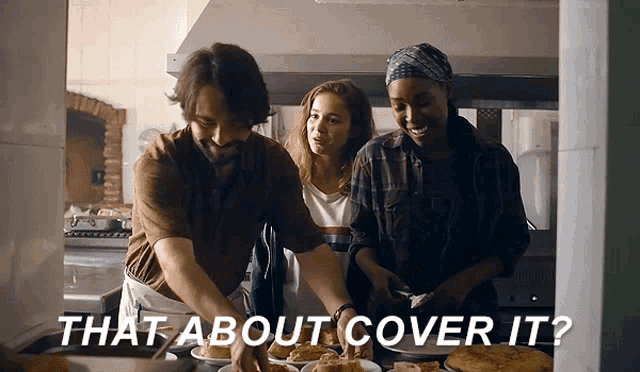
Images courtesy of Netflix
Have strong thoughts about this piece you need to share? Or maybe there’s something else on your mind you’re wanting to talk about with fellow Fandomentals? Head on over to our Community server to join in the conversation!

